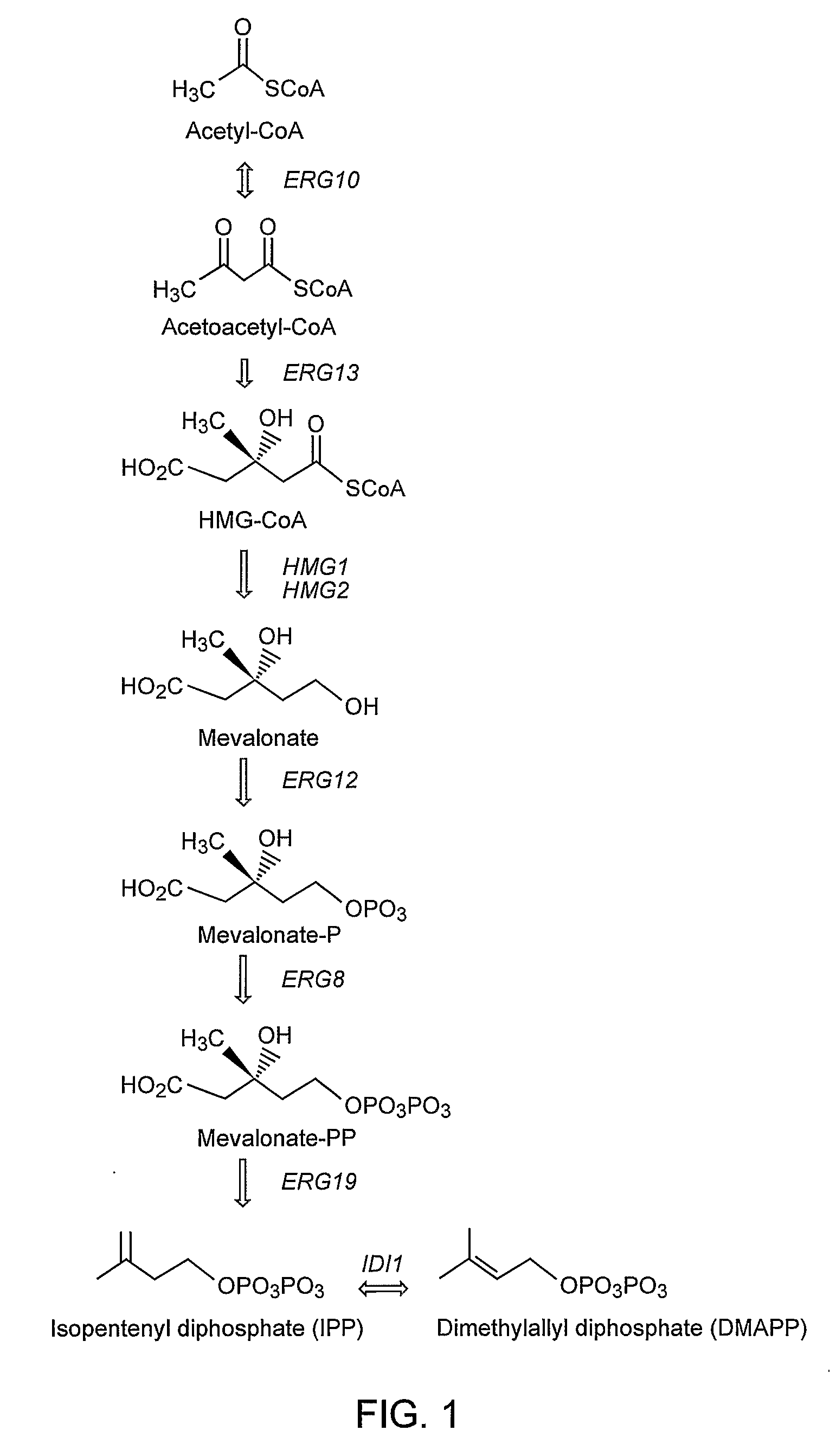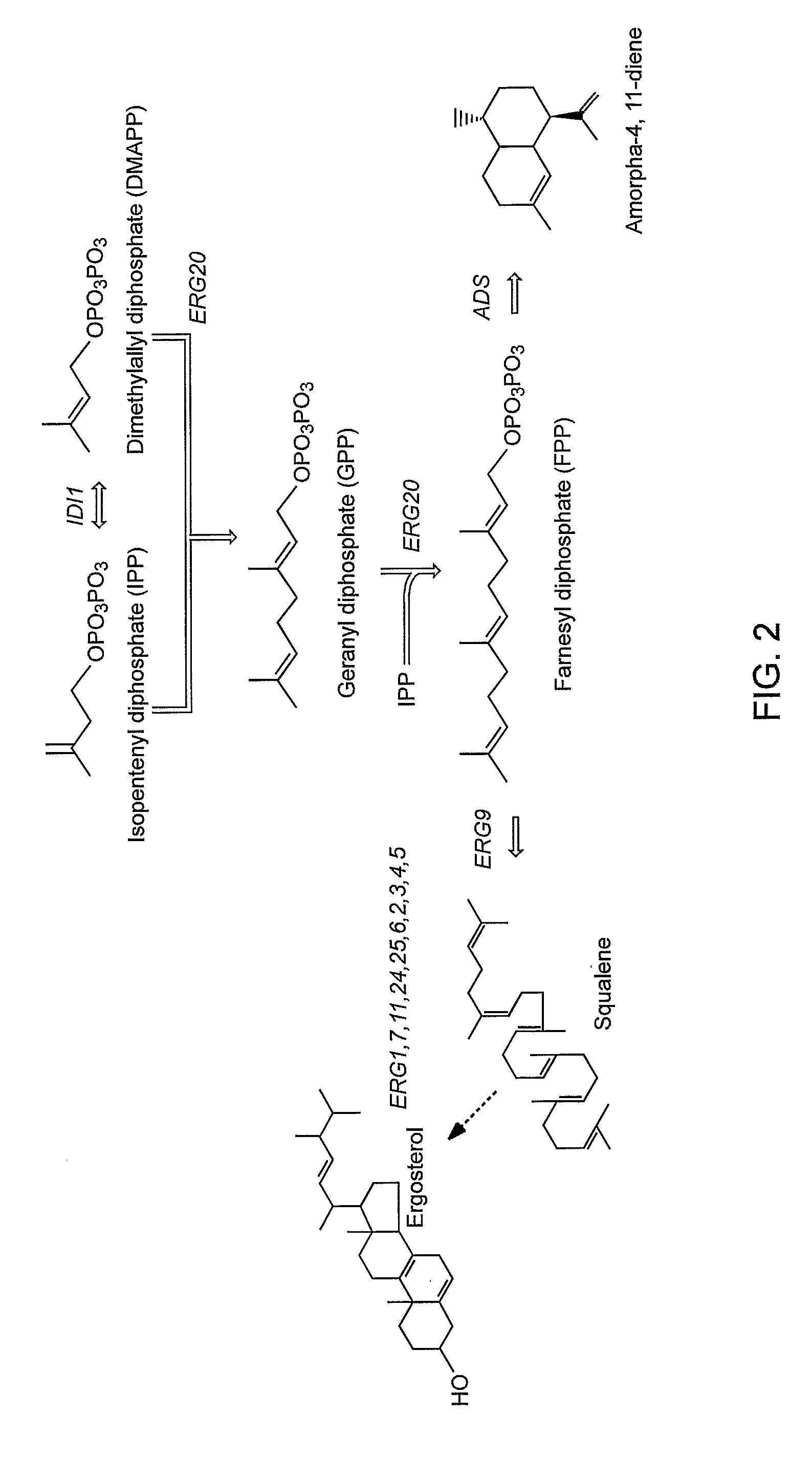Genetically Modified Host Cells And Use Of Same For Producing Isoprenoid Compounds
a technology of host cells and isoprenoids, which is applied in the direction of transferases, lyases, enzymology, etc., can solve the problems of low yield and/or high cost of synthetic or semi-synthetic production of natural products, uneconomical or impossible to synthesize, and limited extraction of natural products from native sources, etc., to achieve increased prenyl transferase activity, increased activity levels, and reduced squalene syntha
- Summary
- Abstract
- Description
- Claims
- Application Information
AI Technical Summary
Benefits of technology
Problems solved by technology
Method used
Image
Examples
example 1
Producing High Levels of an Isoprenoid Compound in a Genetically Modified Yeast Cell
Materials and Methods
[0104]Chemicals. Dodecane and caryophyllene were purchased from Sigma-Aldrich (St. Louis, Mo.). 5-fluoortic acid (5-FOA) was purchased from Zymo Research (Orange, Calif.). Complete Supplement Mixtures for formulation of Synthetic Defined media were purchased from Qbiogene (Irvine, Calif.). All other media components were purchased from either Sigma-Aldrich or Becton, Dickinson (Franklin Lakes, N.J.).
[0105]Strains and media. Escherichia coli strains DH10B and DH5a were used for bacterial transformation and plasmid amplification in the construction of the expression plasmids used in this study. The strains were cultivated at 37° C. in Luria-Bertani medium with 100 mg liter−1 ampicillin with the exception of pδ-UB based plasmids which were cultivated with 50 mg liter 1ampicillin.
[0106]Saccharomyces cerevisiae strain BY4742 (Baker Brachmann et al. (1998) Yeast 14(2): 115-132), a deri...
PUM
| Property | Measurement | Unit |
|---|---|---|
| temperature | aaaaa | aaaaa |
| temperature | aaaaa | aaaaa |
| temperature | aaaaa | aaaaa |
Abstract
Description
Claims
Application Information
 Login to View More
Login to View More - R&D
- Intellectual Property
- Life Sciences
- Materials
- Tech Scout
- Unparalleled Data Quality
- Higher Quality Content
- 60% Fewer Hallucinations
Browse by: Latest US Patents, China's latest patents, Technical Efficacy Thesaurus, Application Domain, Technology Topic, Popular Technical Reports.
© 2025 PatSnap. All rights reserved.Legal|Privacy policy|Modern Slavery Act Transparency Statement|Sitemap|About US| Contact US: help@patsnap.com



